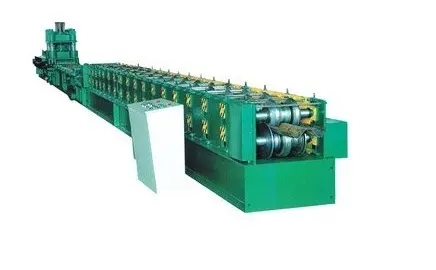
Understanding AASHTO Guardrail Cold Bending Machines
Guardrails are essential components of road safety systems, designed to prevent vehicles from leaving the roadway and to minimize the severity of accidents. The American Association of State Highway and Transportation Officials (AASHTO) sets the standards for the design, testing, and installation of these protective barriers. One of the critical elements in the production of guardrails is the cold bending process, which utilizes specialized machinery to ensure that guardrails meet the rigid specifications required for safety and performance. This article delves into the functionality and importance of AASHTO guardrail cold bending machines.
The Basics of Cold Bending
Cold bending refers to the process of shaping metal at room temperature without the application of heat. This method is widely used in the production of guardrails as it preserves the material's structural integrity while providing the necessary strength and flexibility. In the context of guardrails, cold bending allows manufacturers to create curved or angled components that are essential for effective installation on various terrains.
Importance of AASHTO Standards
AASHTO standards play a crucial role in ensuring that guardrails are designed and manufactured to meet safety requirements. These standards dictate the materials, design specifications, impact resistance, and performance criteria for guardrails used on highways and roadways. Cold bending machines that operate in compliance with AASHTO standards are equipped to produce guardrails that not only adhere to these guidelines but also ensure durability and reliability in real-world conditions.
Features of AASHTO Guardrail Cold Bending Machines
AASHTO guardrail cold bending machines are designed with advanced technology and features that enhance their efficiency and effectiveness
1. Precision Engineering These machines are built to deliver high precision in bending operations. They utilize computer numerical control (CNC) technology to ensure accurate angles and shapes, which is crucial for the proper alignment and performance of guardrails.

2. Versatility AASHTO cold bending machines can process a variety of materials, including steel, aluminum, and other alloys. This versatility allows manufacturers to adapt to different project specifications and requirements.
3. High Productivity Modern cold bending machines are designed for high throughput, enabling manufacturers to produce large quantities of guardrail components in a shorter time frame while maintaining quality standards.
4. Quality Control Many machines incorporate built-in quality control mechanisms that monitor the bending process and detect any deviations from specified parameters, ensuring that all produced components meet AASHTO specifications.
5. User-Friendly Interfaces With the advancement of technology, these machines now come with user-friendly interfaces that allow operators to program and monitor bending operations easily. This enhances operational efficiency and reduces the chances of human error.
The Role of Cold Bending in Guardrail Manufacturing
The cold bending process is vital in guardrail manufacturing as it enables the production of components that conform to the specific geographical and environmental conditions where they will be installed. For example, roadways that traverse hilly or uneven terrain necessitate guardrail systems that can curve and adapt to changes in elevation. Through the cold bending process, manufacturers can create guardrails that effectively address these challenges, providing both safety and aesthetic value.
Conclusion
In summary, AASHTO guardrail cold bending machines play a fundamental role in the production of safe and reliable guardrails. By adhering to strict AASHTO standards and utilizing advanced cold bending technology, manufacturers can ensure that their products meet the demands of modern transportation infrastructure. As road safety continues to be a priority across the globe, the importance of high-quality guardrail manufacturing, supported by efficient cold bending processes, cannot be overstated. These machines not only enhance productivity but also contribute to safer roadways for all users.